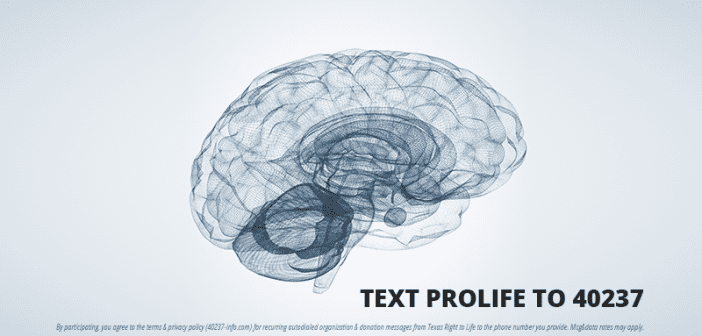(This is the third article of our brain death series. Make sure to read Article 1 and Article 2, and be on the lookout for the next article in the series!)
On paper, the concept of brain death seems relatively simple: apply a legal definition of brain death to a patient’s clinical condition and issue a diagnosis accordingly. The problem is, while Texas law is clear about what qualifies as death (the “irreversible cessation of spontaneous brain function”), there is no uniform clinical process in ICUs across the country to reach such a determination. Additionally, the medical community disagrees on whether the proper clinical tools even exist in medical practice to accurately reach such a definition. As current medical practice shows us, physicians, patients, and their loved ones are at the center of a flawed concept resulting in disastrous, sometimes erroneous, end-of-life decisions.
How does this ambiguity between legal definitions, clinical practice, and clinical tools affect brain death in actual practice? That is to say, how are physicians actually reaching their determinations of brain death?
Here’s the reality.
Testing
A universal process for determining brain death does not exist. Different hospitals use different protocols and possess differing diagnostic tests. As many families will confirm from experience, a common protocol in Texas hospitals is to perform one bedside test, or physical examination, then perform a second bedside test after a 12-hour period has elapsed. The physician looks for motor reflexes and brain stem reflexes, such as pupillary, corneal, and gag reflexes. If his second test confirms the brain death diagnosis, this is often when the hospital issues its legal declaration of death. Others have shared a vastly different experience. In Texas, the physician could be a resident or an attending physician from any discipline– anyone who has received a medical degree. The law does not mandate a board-certified neurologist.
Families often request and physicians can order “ancillary tests” or cerebral blood flow scans which, as the latter name suggests, measure how much blood flows to the brain. Common types include cerebral angiography, transcranial ultrasound, CTA (computed tomography angiography) or MRA (magnetic resonance angiography), and radionuclide brain imaging. By all appearances, blood flow scans have become common practice in many hospitals.
Imaging tests such as a CT or MRI may also be performed, despite the fact that the American Academy of Neurology (AAN), a well-respected authority on neurology, does not currently recognize either as being an acceptable ancillary test. An EEG (electroencephalogram) is often used to determine the amount or loss of bio-electrical activity.
Finally, hospitals may measure a patient’s pulmonary functions using the oft-misunderstood apnea test. The classic apnea test entails a complete removal of the patient’s ventilator for approximately 10 minutes, to see if the patient breathes on his own. For a patient who has already suffered an anoxic brain injury, the intentional deprivation of further oxygen seems absurd and arguably runs the risk of causing brain damage that was not present before. Even the AAN admits that “[t]here is insufficient evidence to determine the comparative safety of techniques used for apnea testing.”
Discrepancies
Isolated studies offer recommendations for testing, but is there a medical consensus? Some hospitals perform one bedside test while others perform two; some perform the additional tests—which are common but not necessarily required—while others do not.
Often, a hospital appears to have a standard protocol, but individual physicians are given free reign to perform whichever additional testing they deem necessary or appropriate. Upon request from the patient’s family, a doctor may perform extra testing that exceeds the institution’s minimum protocol. But if those extra measures are not mandatory, the family is at the mercy of the attending physician and his willingness to humor them and order a test he may or may not believe will make a difference in the diagnosis.
The universal discrepancies in brain death determination are no secret. Even the medical field admits it. The NeuroCritical Care Society, an international society of neurocritical care providers, offers a brain death determination course that acknowledges the following:
“While there exists a legal provision for brain death, institutional protocols for diagnosis are not universal and are often absent; no specific criteria for diagnosis is mandated. Even among institutions with an organized diagnostic protocol, there is substantial variation both in the criteria used and who may perform the determination.”
Institutional protocols are often absent. The fact that this statement comes from a course the sole purpose of which is to qualify physicians to determine brain death—speaks volumes. And the authors have hit the nail on the head.
Each time Texas Right to Life’s patient advocacy team receives a call about an urgent brain death case, we advise the family to request a copy of the hospital’s written brain death policy. To date, no hospital has ever provided such a policy to Texas Right to Life or to the patients they assist.
Small wonder. Although secondary tests are designed to provide clarity when preliminary tests are deemed inconclusive, the brain death determination is ultimately left up to the physician. To offer physicians a multitude of possible testing options—then not require any one in particular—is just begging for a slapdash diagnosis. It’s like giving a classroom of students extra credit opportunities when they don’t need any more points to pass the course. A few students will complete the extra credit because they are driven to pursue every opportunity for excellence. But many will do the bare minimum. Why go the extra mile, one may ask, when I am not required to do so?
Hospital Practice
For 14-year-old Naomi in an El Paso hospital, a CT, bedside test, and apnea test were deemed sufficient to diagnose brain death. 27-year-old Dwayne was given merely a bedside and a CT. Due to testing inconsistencies, the same patient may theoretically be declared brain dead in one hospital and not brain dead in the next.

Brain death is complicated. What if the family requests an explanation of a specific blood flow exam that is not in the hospital’s “protocol?” What if the doctor declaring brain death is not a neurologist, yet the patient has a host of neurological complications? What if the patient has a complicated history of brain tumors that could exacerbate the issue? These are nuanced assessments requiring skill and expertise that arguably no physician can master during a 2-hour video course.
What level of scrupulousness should we demand from physicians authorized to determine brain death in our loved ones or ourselves? What would you demand?
The content of this article reflects the experience and research of patient advocates and is in no way intended to be a substitute for professional medical advice.
References:
- Tex. Health & Safety Code § 671.001(b).
- Russell JA, Epstein LG, Greer DM, Kirschen M, Rubin MA, Lewis A. Brain death, the determination of brain death, and member guidance for brain death accommodation requests: AAN position statement. Neurology, Jan 2019, 92 (5) 228-232. doi: 10.1212/WNL.0000000000006750.
- Barnes E, Greer D. Inconsistency in Brain Death Determination Should Not Be Tolerated. AMA J Ethics, 2020;22(12):E1027-1032. doi: 10.1001/amajethics.2020.1027.
- Aboubakr M, Yousaf MIK, Weisbrod LJ, et al. Brain Death Criteria. [Updated 2022 Nov 27]. In: StatPearls [Internet]. Treasure Island (FL): StatPearls Publishing, 2022 Jan-.
- Biel S, Durrant J. Controversies in Brain Death Declaration: Legal and Ethical Implications in the ICU. Curr Treat Options Neurol, 2020;22(4):12. doi: 10.1007/s11940-020-0618-6.
- Wijdicks EFM, Varelas PN, Gronseth GS, Greer DM. Evidence-based guideline update: Determining brain death in adults. Neurology, Jun 2010, 74 (23) 1911-1918. doi: 10.1212/WNL.0b013e3181e242a8.

